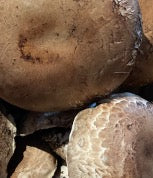Fat-Soluble Vitamins
Also, the body does not need a lot of fat-soluble vitamins.2 The fat-soluble vitamins are different from the water-soluble vitamins because fat-soluble vitamins are reserved in the cells and are not readily discharged from the body.2
|
Fat-Soluble Vitamins |
Purpose |
Fruits and Vegetables |
|
Vitamin A or beta-carotene2
|
-Utilize for eyesight, epidermis, and mucous layer in the body2 -Bone and teeth development2 -Support immune function2 |
-Fruits: Guavas4, Acai Berries4, and Mangoes4 -Vegetables: Chard1, Cabbage1, Romaine1, Bok choy1, Spinach1, Kale1, Carrots2, Sweet potatoes2, Pumpkin2, Mangoes4 ,and Winter Squash2 |
|
Vitamin D2
|
-Utilize for the intake of calcium2 -Packaged in the bones2 |
-Vegetables: Mushrooms handled with ultraviolet rays3 |
|
Vitamin E2 |
-Preserves the cell walls2 |
-Fruits: Kiwis4, and Avocados4 -Vegetables: Chard1, Cabbage1, Romaine1, Bok choy1, Spinach1 , Kale1, Corn2, and Soybean2 |
|
Vitamin K2 |
-Used for efficient blood clotting2 |
-Fruits: Mangoes4, and Avocados4 -Vegetables: Chard1, Cabbage1, Romaine1, Bok choy1, Spinach1 and Kale1
|
Minerals
|
Minerals |
Purpose |
Fruits and Vegetables |
|
Calcium2
|
-Aids in the development of bones and teeth2 -Aids in blood clotting2 -Aids in nervous and muscular system2 |
-Fruits: Orange juice2 and Acai Berries4 -Vegetables: Broccoli2, Chard1, Cabbage1, Romaine1, Bok choy1, Spinach1 and Kale1 |
|
Potassium2
|
-Control water intake in tissues and blood2 -Helps nerves and muscles development2 |
-Fruits: Oranges3, Raisins2, Bananas2, Prune juice2, Cantaloupe1, Kiwis4, Avocados4, and Tomatoes2 -Vegetables: Broccoli2, Potatoes2, Chard1, Cabbage1, Romaine1, Bok choy1, Spinach1 and Kale1 |
|
Sodium2 |
-Manages water intake2 -Restoring nerves2 |
-Canned fruits2 and vegetables2 |
|
Iron2 |
-Used with red blood cells to help transfer oxygens throughout the whole body2 |
-Fruits: Dried Fruits3, and Dragon Fruits4 -Vegetables: Chard1, Cabbage1, Romaine1, Bok choy1, Spinach1, Kale1and Peas3 |
|
Zinc2 |
-Important for metabolic processes2 -Aids immune, reproductive, and nerve system2 |
-Vegetables: Peas3 |
Disclaimer: Please consult your primary care physician about specific dietary intakes of macronutrients and micronutrients.
- American Academy of Family Physicians. (2022). Changing your diet: Choosing nutrient-rich foods. https://familydoctor.org/changing-your-diet-choosing-nutrient-rich-foods/
- Pomona College. (2022). Macronutrients: Carbohydrates, Fats, and Proteins. https://www.pomona.edu/administration/dining/health-wellness/macronutrients
- Washington State University. (n.d.). Nutrition Basics. https://mynutrition.wsu.edu/nutrition-basics
- Staughton J. (2020). Tropical Fruits: Health Benefits & Nutrition Facts. Organic Facts. https://www.organicfacts.net/tropical-fruits.html




